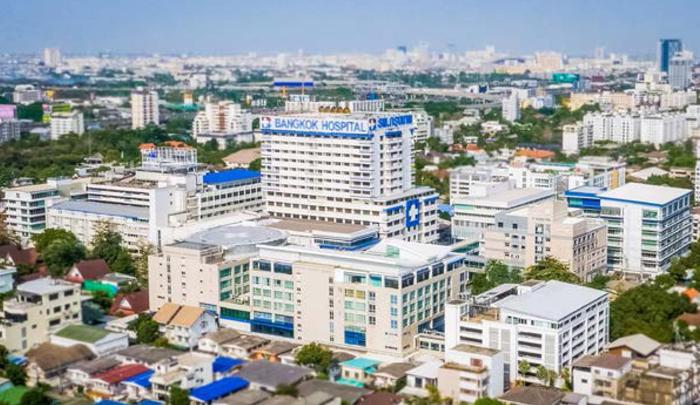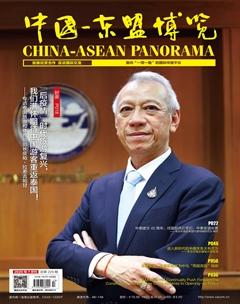手握“王牌”,泰国旅游业另辟“医疗”蹊径
黄昀昀

根据世界卫生组织的报告,到2025年,北美、欧洲、中东、亚太60%以上的国家面临着人口老龄化,全球跨境医疗旅游需求将迎来爆发式增长。事实上,早在16年前,泰国政府就开始整合医疗、保健、旅游等资源,致力于将泰国打造为集医疗服务和度假休闲为一体的旅游胜地。
医疗旅游为泰国旅游业提供新亮点
“感觉自己是来度假的游客,而不是来就诊的病人。”前往泰国体验医疗旅游的中国游客张菲丽说。时常面带微笑的医护人员、装潢如星级酒店的医院、一对一个性化的服务让她对那次泰国之旅念念不忘。她的经历是众多游客的缩影。
自2004年起,泰国政府开始着力推动医疗旅游业的发展,泰国旅游和体育部联合公共卫生部牵头医疗服务、健康保健服务、传统草药等相关产业,先后提出了把泰国打造为“世界保健中心”“亚洲健康旅游中心”“亚洲SPA 中心”的战略计划。截至2018年12月,泰国有64家医院获得了JCI(国际医疗卫生机构认证联合委员会)认证,美容整形、SPA养生、牙科保健、试管婴儿等专业医疗项目受到多国游客追捧。
据美国彭博新闻社报道,泰国的医疗旅游规模位居世界第一,是全世界接待医疗旅游者最多的国家、亚洲地区作为医疗旅游目的地赚取外汇最多的国家。从2015年起,泰国医疗旅游产值超过45亿美元,年增长率达18%,每年有超过300万人到泰国看病。其中拥有最优质医疗资源的地区也是著名旅游地,分别为曼谷、清迈、清莱、华欣、苏梅岛、芭提雅和普吉岛等。
泰国亚洲医疗旅游公司副总裁Pimnara Punsuay介绍道,随着医疗旅游风潮的兴起,大量针对改善患者健康情况的酒店和度假村,以及提供综合医疗方案的私人医院崛起,许多酒店在已有SPA疗养的基础上建立起医疗诊治中心。为顾客提供医疗问诊和疗养咨询等服务逐渐成为泰国酒店服务的别样亮点。
高性价比的医疗服务带来更强竞争力
泰国街头,按摩店依次排开,店员站在门口熟练地招揽客人,店内有三五游人体验“马杀鸡”。这是很多游客熟悉的场景。泰式按摩拥有4000多年历史,古代泰国皇族用它来治疗身体劳损问题,现在普及为当地民众一种“治未病”的养生方式。和中国的“不到长城非好汉”一个道理,许多游客赴泰旅游,都将体验泰式按摩列入计划中。“做了泰国的‘马杀鸡才懂什么是真正的按摩。”是一句广泛流传于游客中的话。
如果说“马杀鸡”是泰国医疗旅游的初级一环,那么由专业医疗机构开展的医疗服务可以说是它的重要支柱。美国萨托利医疗旅游公司总裁史蒂芬·拉什評价道:“泰国许多医院已经达到世界最高水平,和美国不相上下。”从价格来看,“尤其是在重症治疗上,泰国医院的价格相当于欧美的1/3到1/4,较新加坡低一到两成。”曼谷杜斯特医疗服务集团首席运营官Poramaporn Prasarttong-Osoth透露,在价格和亚洲文化的一致性上,泰国比其他国家更具竞争力。
以较为著名的曼谷医院、康民国际医院、BNH医院、帕亚泰医院为例,经过多年发展,这些医院在心脑血管治疗、肿瘤治疗、试管婴儿等医疗项目上颇有建树,并且结合泰国旅游业蓬勃发展的趋势,为患者配备多种语言的专业翻译。患者在诊疗过程中,通常能享受到护士一对一的贴心服务。
曼谷医院作为泰国众多国际医疗医院的杰出代表,在芭提雅、普吉岛等旅游胜地都设立了分院。需要进入康复、疗养阶段的患者,可在总院调出资料后,到其它城市或海岛疗养,同时享受异域风光和医疗服务。
受益于得天独厚的气候、地理环境和较低的生活成本,长期以来,泰国也是最受养老者青睐的国家之一。2002年,为鼓励外国老人前来休养,泰国允许年满50岁、存款不低于80万泰铢(约合人民币15万元)、有身体健康证明和无犯罪记录证明的外国人,申请为期一年的“退休签证”,到期后还可续签。五十几岁的美国人Ray在清迈为自己购置了一套房产,打算在那里度过自己的晚年生活。“泰国生活节奏慢,美食、美景丰富多样,当地人也十分热情,在那里养老是比较适合我的。”Ray说。
泰国医疗旅游成中国游客的新“宠儿”
在中国,随着出境旅游市场的进一步开放,越来越多人希望能享受到更高层次的医疗服务。这使泰国一些医疗机构瞄准机遇,积极布局,以期能在中国游客群体中提升知名度和影响力。
曼谷杜斯特医疗服务集团成立于1972年,经过近50年的发展,它由一家单体医院发展为泰国最大的医院和诊所网络集团。2018年9月,在《亚洲货币》杂志组织的2018年度亚洲杰出奖项评选中,该集团获得“泰国最杰出医疗保健企业”奖。为争取中国消费市场,该集团特别定制了医疗旅行套餐,其中包括中国多个城市飞往泰国的机票、地面交通和住宿,配套的医疗服务有健康检查、癌症筛查、心血管筛查等。另外,中国患者到访其旗下任何一家医院,都能得到翻译团队、客户服务团队的全程协助。
该集团首席财务官Narumol Noi-Am称:“中国正逐渐成为泰国医疗旅游的重要市场。2015年以前,我们医院的前十大患者来源国并不包括中国。而2017年,中国已经成为第二大收入增长的市场,并开始以每年30%的增速增长。”曼谷杜斯特医疗服务集团首席运营官Poramaporn Prasarttong-Osoth介绍,泰国医院在治疗肺癌、乳腺癌、结直肠癌方面取得了世界级临床效果,极大提升了这些患者的长期生存率。“考虑到中国的癌症发病率正在急剧增加,患者寻求能够提供更好医疗效果和服务的治疗目的地,我们认为这一增长趋势将会继续。”他说。
像这样的国际医院,泰国还有很多。为中国患者设立专门的网站、标识、讲中文的医护人员等,成为这些医院的“标配”。有些医院甚至根据中国患者的喜好,设立了官方微信公众号,推出具有中国特色的病患饮食套餐等。泰国政府也为各大医院争取这一商机铺路。2017年6月,泰国公共卫生部联合外交部、旅游和体育部在泰国旅游局中文网上发布了声明,规定对于以治病为目的入境泰国的中国居民及其陪同者可获免签。每次入境泰国不得超过90天,需要多次入境泰国的上述人员可以续签。在多种便利优势并行的前提下,中国人赴泰旅游的目的除了感受当地风土人情之外,寻医问药也逐渐成为主流。
The COVID-19 in 2020 has brought a heavy blow to the global exhibition industry. Thousands of exhibitions expected to hold in China were suspended, especially outbound exhibitions. This situation inevitably caused worries among people. But Chinese Premier Li Keqiang said, “China will unswervingly promote opening-up. This policy will not and cannot be changed.” The remark made people rest assured.
The role of China-ASEAN Expo (hereinafter referred to as the CAEXPO) in promoting economic and trade cooperation between China and ASEAN will still be effective. “The Belt and Road” and “digital economy” will be key words for the 17th CAEXPO. At that time, higher-level, more diverse and innovative activities will be unveiled.
“Necessary exhibitions” can be held
Three major smoke-free industries recognized by the world are exhibition industry, tourism and real estate. It is generally believed that the exhibition industry has an inherent driving effect featuring 1:9. That is to say, if the income of a certain exhibition is “1”, then the income of corresponding industries such as hotel, transportation, catering and tourism is “9”.
According to the data of China Exhibition Economic Development Report 2019, 3,547 economic and trade exhibitions were held in China, with a total exhibition area of 130.48 million square meters, and the market scale continued to rank first in the world. The direct economic output value exceeded RMB 700 billion yuan. Affected by the COVID-19 in 2020, the thriving exhibition industry stepped on the “speed bump”. From February to April 2020, there were nearly 3,500 domestic exhibitions affected by the epidemic in China, while the situation of outbound exhibitions would be even more severe. The outbreak of overseas epidemic has increased uncertainty for the recovery of Chinas exhibition industry.
The Guidelines on Epidemic Prevention and Control issued on May 8, 2020 by the State Council of China has brought hopes to the exhibition industry, in which the saying that “all kinds of necessary meetings and exhibitions can be held” has provided policy support for accelerating the “restart” of the exhibition industry. On May 28, at the third session of the 13th National Peoples Congress, Li Keqiang reiterated the basic national policy of “opening-up”, increasing the confidence of international exhibitions. “China will unswervingly promote opening-up. This policy will not and cannot be changed. We will continue to expand cooperation with the world and independently introduce more measures to expand the scale of opening up,” said Li Keqiang.
Great hopes have been placed on Nanning, the permanent venue of the CAEXPO. The Implementation Opinions of Nanning Municipal Peoples Government on Further Promoting the High-Quality Development of the Exhibition Industry (hereinafter referred to as the Implementation Opinions) put forward that Nanning should be built into an international exhibition cluster area facing ASEAN, and an important meeting destination for China-ASEAN and central south and southwest regions. According to the Implementation Opinions, Nanning will give full play to the brand effect of the CAEXPO and the China-ASEAN Business and Investment Summit, guide the leading enterprises, industries and trade associations to improve the competitiveness of exhibition industry by deepening cross-border cooperation and innovating exhibition modes such as “Internet plus”, and support holding exhibitions in ASEAN and countries along the Belt and Road. Although the epidemic has not yet disappeared, the CAEXPO still bears the mission.
Focus on two key words and create several “firsts”
In the past 16 years, the CAEXPO has been serving the basic national policy of “opening-up”. The scope of the CAEXPO has expanded to RCEP and the Belt and Road from China-ASEAN. Since 2020 marks the Year of China-ASEAN Digital Economic Cooperation, the theme of the 17th CAEXPO has been determined as “Jointly Building the Belt and Road and Developing Digital Economy”, to build a cooperation platform for exhibitors with brand new attitudes.
Since the launch of the Belt and Road Initiative, Chinese President Xi Jinping has been constantly enriching its connotation, “Promoting connectivity, openness and inclusiveness is the only way to deal with the global crisis and achieve long-term development. Jointly building international cooperation facing the Belt and Road can play a vital role.” It is reported that the CAEXPO will plan more high-level friendly exchange activities and build more diversified high-level dialogue platforms. Besides, countries and regions along the Belt and Road will be encouraged to join the CAEXPO and be invited to become specially invited cooperation partners. The CAEXPO also will promote the participation of their economic and trade delegations led by ministerial level officials and hold special economic and trade exchanges, to display dominant and characteristic commodities and enhance the effectiveness of the CAEXPO.
On June 12, 2020, the opening ceremony of the Year of China-ASEAN Digital Economic Cooperation was held online. Li Keqiang said in the congratulatory letter that he hoped the two sides can “focus on win-win cooperation, cultivate more new growth points of cooperation in the fields of smart city, artificial intelligence, big data and other industries, create more powerful new momentum for economic and social development of both sides, and inject new vitality into the realization of lasting stability and prosperity in the region”.
The CAEXPO will closely follow the hot spots of cooperation, take the high-quality development led by digital economy and the industrial transformation and upgrading promoted by the new generation of information technology as its goal, focus on “innovation and cooperation”, and pay more attention to the scientific and technological content and the added value of exhibits. In the 17th CAEXPO, targeted arrangements will be made in terms of the content of exhibitions, and a series of activities will be planned to promote the achievements of China-ASEAN digital economic cooperation.
Under the theme of “Jointly Building the Belt and Road and Developing Digital Economy”, the CAEXPO will create several “firsts” as its highlights. First, the RCEP exhibition area will be set up for the first time.
In June 22, 2020, the trade ministers of the 15 member countries of RCEP said in a statement that the epidemic increased the importance of signing the agreement. Since it would show the strong support for multilateral trade system, regional integration and regional economic development. On June 23, the 15 member states held a ministerial video conference and unanimously decided to work hard to promote the signing of the agreement within the year. If the agreement is signed successfully, RCEP countries will be invited to participate in the CAEXPO, and exchange activities for RCEP countries will be held to display investment information and characteristic commodities from Japan, South Korea, Australia and other countries in special forms.
Second, the first cross-border E-commerce exhibition area will be set up in the CAEXPO. Cross-border E-commerce platforms and retailers from China, ASEAN and countries outside the region will be invited, with a focus on cross-border E-commerce services and imported goods.
Since 2010, express companies like SF, Zhongtong, Baishi and Yuantong have successively entered the ASEAN market. In addition to bringing “China speed” to the local express industry, we can also see the feasibility of cross-border E-commerce development between China and ASEAN. On June 18, 2020, Jingdong Indonesia, a subsidiary of Jingdong group, ushered in the first “618 Shopping Festival” with local characteristics. This not only shows the great potential of “digital economy”, but also marks a good start for the Year of China-ASEAN Digital Economic Cooperation.
According to the CAEXPO Secretariat, the preparatory work for the CAEXPO is in progress. The co-organizers of ASEAN countries have said that they will continue to book an entire exhibition hall or increase the number of booth in the CAEXPO. Countries outside the region, such as South Korea and Poland, will continue to participate in it. According to statistics, the number of foreign exhibitions is expected to exceed 1,700, including nearly 1,500 for ASEAN countries.
The CAEXPO has yielded fruitful results in the past 16 years. It has promoted the signing of more than 4,000 investment projects, involving many fields such as port cooperation, shipping construction, E-commerce, modern agriculture, trade and logistics, etc., and promoted the implementation of a number of major projects such as China-ASEAN Information Port and China-ASEAN Entrepreneurs Association, ensuring enterprises of both sides truly enjoy the dividends of CAFTA and the Belt and Road. It is believed that when hibiscus is in full blossom, China-ASEAN cooperation will make even greater achievements.

